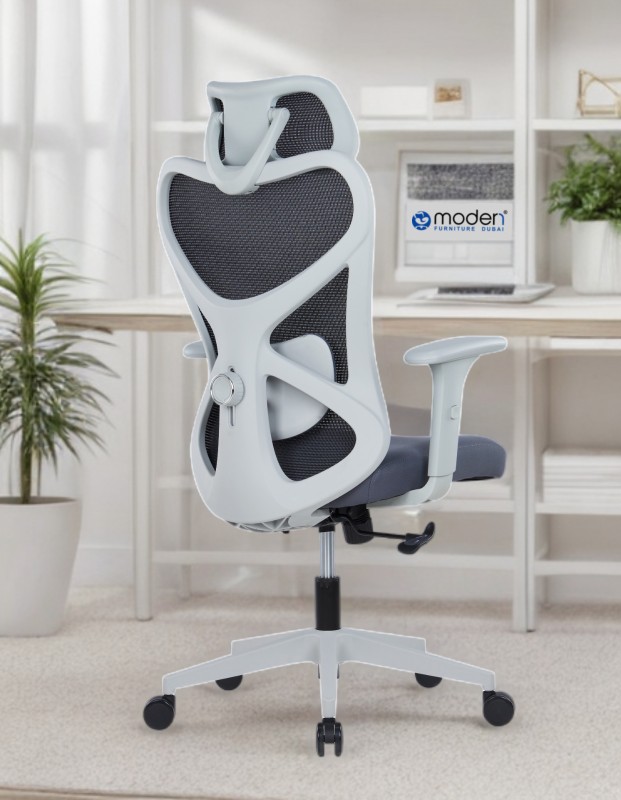
How to Adjust Your Office Chair for Maximum Ergonomic Benefits
Introduction
Sitting for long hours in an improperly adjusted chair can lead to back pain, poor posture, and discomfort. Adjusting your chair correctly ensures better spinal alignment, reduced fatigue, and increased productivity.
In this guide, we’ll walk you through how to adjust your office chair for maximum ergonomic benefits, ensuring long-term comfort and better health.
1. Adjusting Seat Height for Proper Leg Positioning
✔ Your feet should be flat on the floor (or on a footrest).
✔ Your knees should be at a 90-degree angle, level with or slightly below your hips.
✔ If your chair is too high, it can cause circulation issues in your legs.
✔ If too low, it can increase pressure on your lower back.
Recommended Chairs:
-
Ucomfort Super Ergonomic Executive Office Chair – White
Features easy height adjustment for precise ergonomic alignment.

-
Chablo Executive High-Back Ergonomic Office Chair – Black
Offers smooth height customization for all body types.
2. Setting the Right Seat Depth for Back Support
✔ Ensure a 2-3 inch gap between the seat edge and the back of your knees.
✔ A deep seat can cause poor circulation, while a shallow seat can lead to insufficient thigh support.
✔ If your chair has an adjustable seat depth, slide it to a comfortable position.
3. Adjusting Backrest Height and Lumbar Support
✔ Your lower back should be fully supported to prevent slouching.
✔ If your chair has adjustable lumbar support, position it to align with the natural curve of your spine.
✔ The backrest should support the full length of your spine without forcing an unnatural arch.
4. Setting the Right Recline and Tilt Tension
✔ A slight recline (100-110 degrees) reduces pressure on the lower spine.
✔ Tilt tension should be adjusted so that you can lean back effortlessly without feeling unstable.
✔ A locked upright position can increase strain, while excessive recline can reduce support.
5. Positioning Armrests for Shoulder and Elbow Comfort
✔ Armrests should support your arms without lifting your shoulders.
✔ Your elbows should form a 90-degree angle when resting on the armrests.
✔ If your armrests are too high, they can cause shoulder tension; too low, and they can lead to slouching.
6. Adjusting Headrest (If Available) for Neck Support
✔ The headrest should support the base of your head and neck.
✔ It should not push your head forward but rather align with your spine.
Final Thoughts
A properly adjusted office chair can reduce pain, enhance focus, and improve overall well-being. Investing in an ergonomic chair like the Ucomfort Super Ergonomic Chair or the Chablo Executive Office Chair ensures maximum comfort and long-term health benefits.
FAQs
1. How high should my office chair be?
Your chair should be high enough to keep your knees at a 90-degree angle and your feet flat on the floor.
2. Should I keep my chair upright or reclined?
A slight recline (100-110 degrees) is best for reducing spinal pressure.
3. Why do my legs hurt after sitting for long hours?
Your seat may be too high or too deep, restricting blood circulation. Adjusting the seat height and depth can help.



